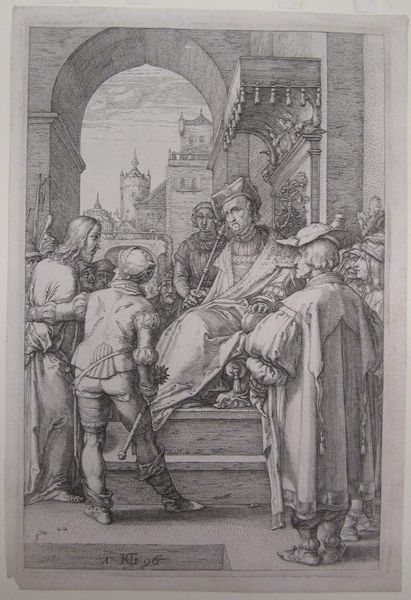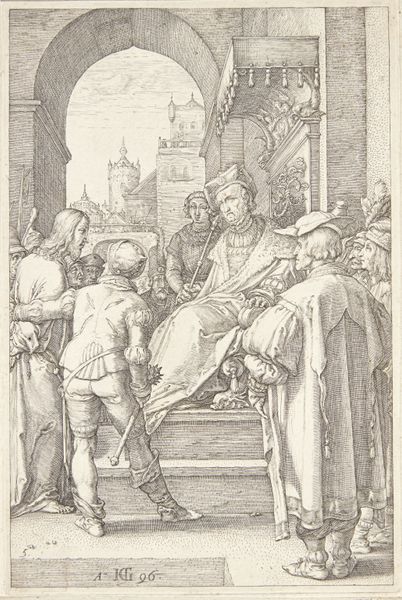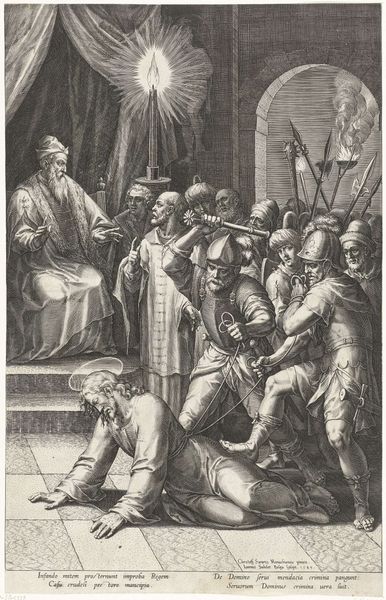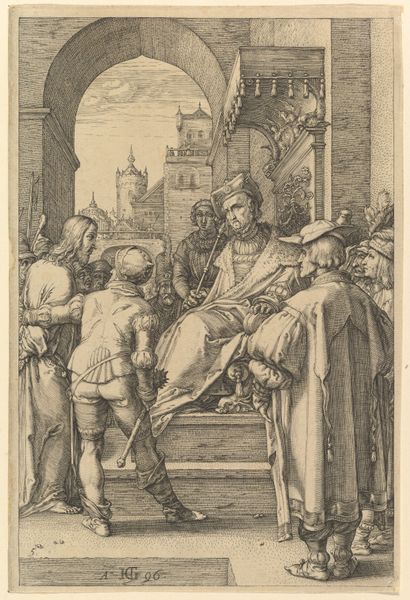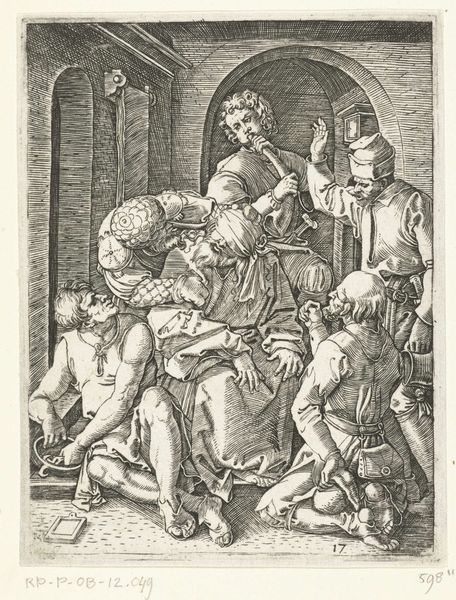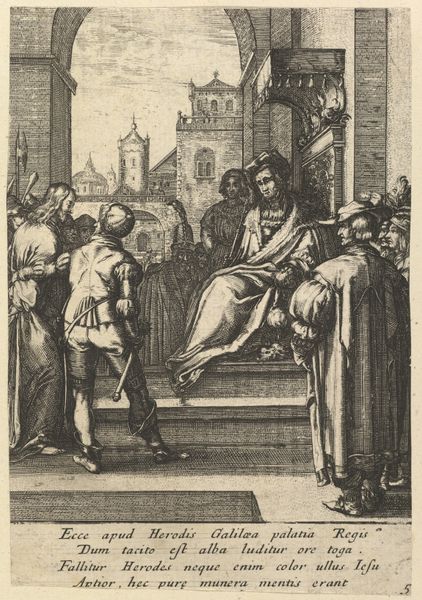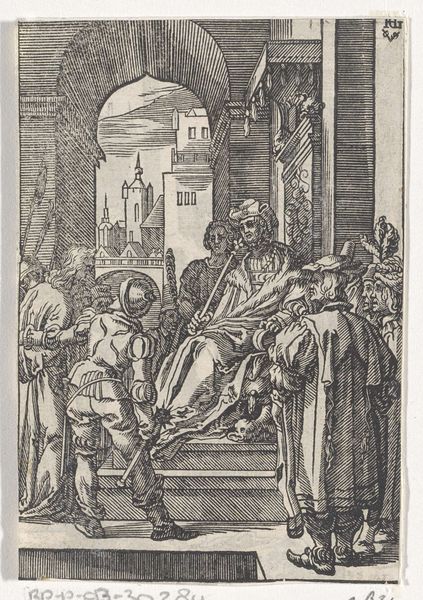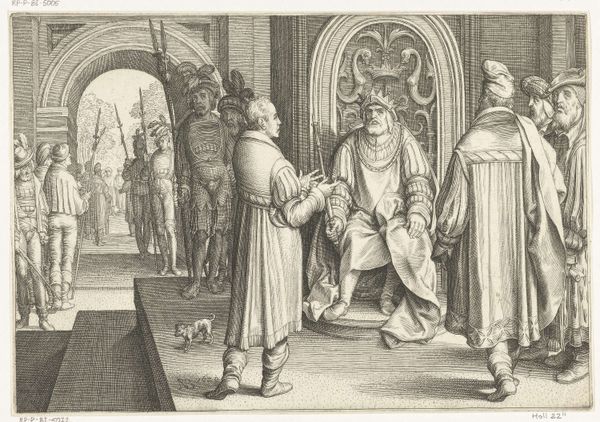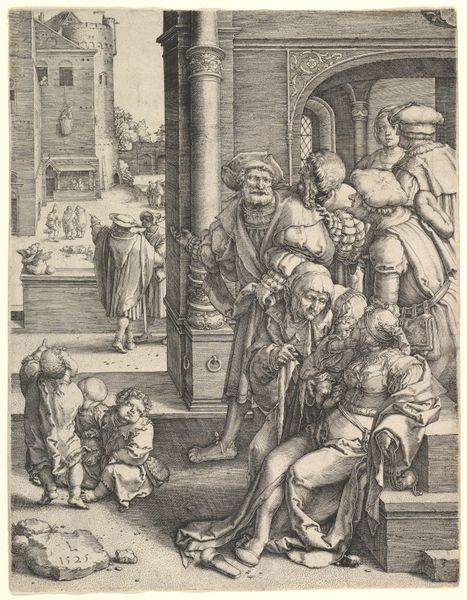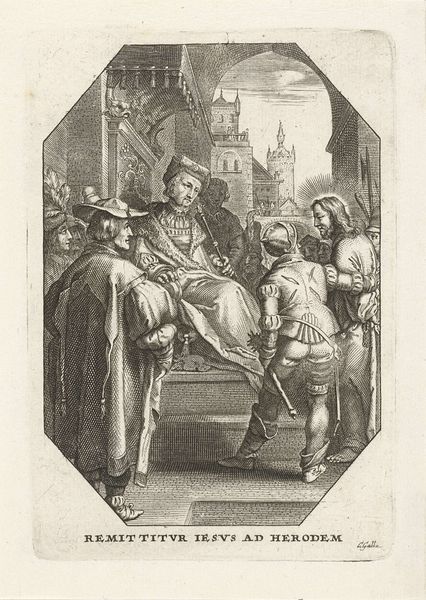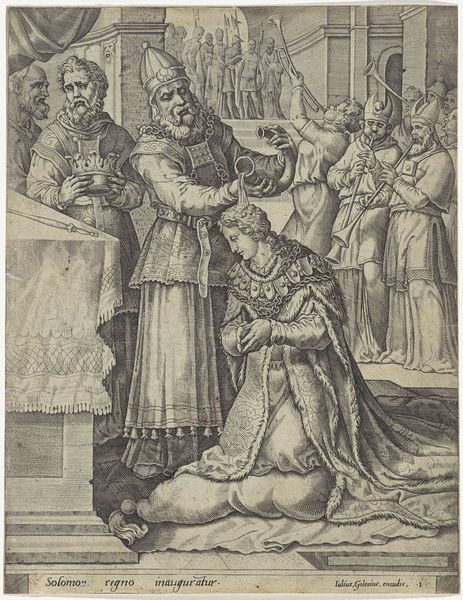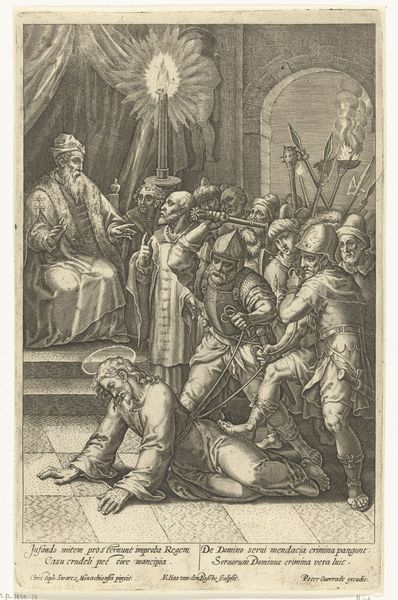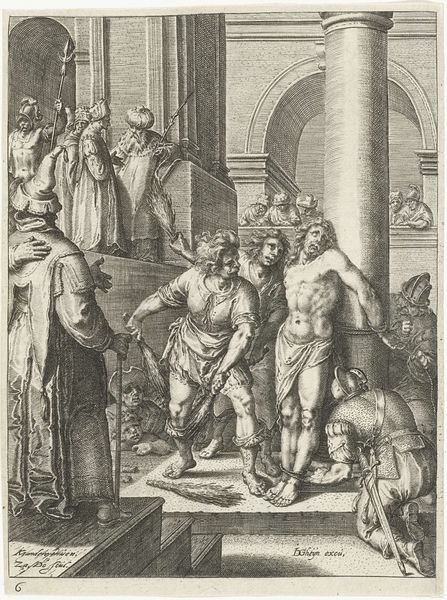
print, engraving
#
narrative-art
#
baroque
# print
#
figuration
#
history-painting
#
engraving
Dimensions: height 188 mm, width 128 mm
Copyright: Rijks Museum: Open Domain
Curator: What a dramatic scene! This is “Christus voor Pilatus,” or “Christ Before Pilate,” an engraving made in 1623 by Ludovicus Siceram. The stark black and white really heightens the tension. Editor: It feels theatrical, doesn't it? The composition—the way Pilate is positioned above everyone, enthroned, with Christ almost swallowed by the crowd—it emphasizes his power and Christ's vulnerability. Curator: Exactly. And Siceram wasn't just inventing this image. He was participating in a well-established tradition of depicting this moment from the Gospels. Consider the socio-political dynamics embedded in its production as an engraving: How did it circulate, and who was the intended audience for this potent image of judgment and authority? Editor: It's fascinating to think about how readily accessible such an impactful image would have been. Focusing on form, though, the intricate line work conveys the textures of fabric and armor. It’s impressive how much detail Siceram managed to pack in with such a limited palette. The city visible in the background is so sharply rendered! Curator: Right, engravings such as this provided a valuable means for disseminating narratives. Consider the labor involved in producing the copperplate used for its creation—a skilled craft itself. Each line etched contributes to both aesthetic effect and to making these crucial stories accessible to those outside the circles of wealthy patrons of the time. Editor: Yes, you can see the influence of printmaking on Baroque aesthetics in its overall emphasis on contrasting tones to create dramatic focus and volume. And even the very slight distortions in perspective and the exaggerated gestures – they seem tailored for mass reproduction. Curator: It prompts one to wonder what interpretations people placed on this narrative during that period, influenced by material circumstances and prevailing sociopolitical conflicts. What meanings did audiences extract from this version? Editor: Perhaps Siceram was pointing us not just toward the past, but inviting reflections about how moral authority and justice were – and continue to be – negotiated. What seems constant is art’s capacity to confront its audience and invite active viewing and continued debate.
Comments
No comments
Be the first to comment and join the conversation on the ultimate creative platform.
